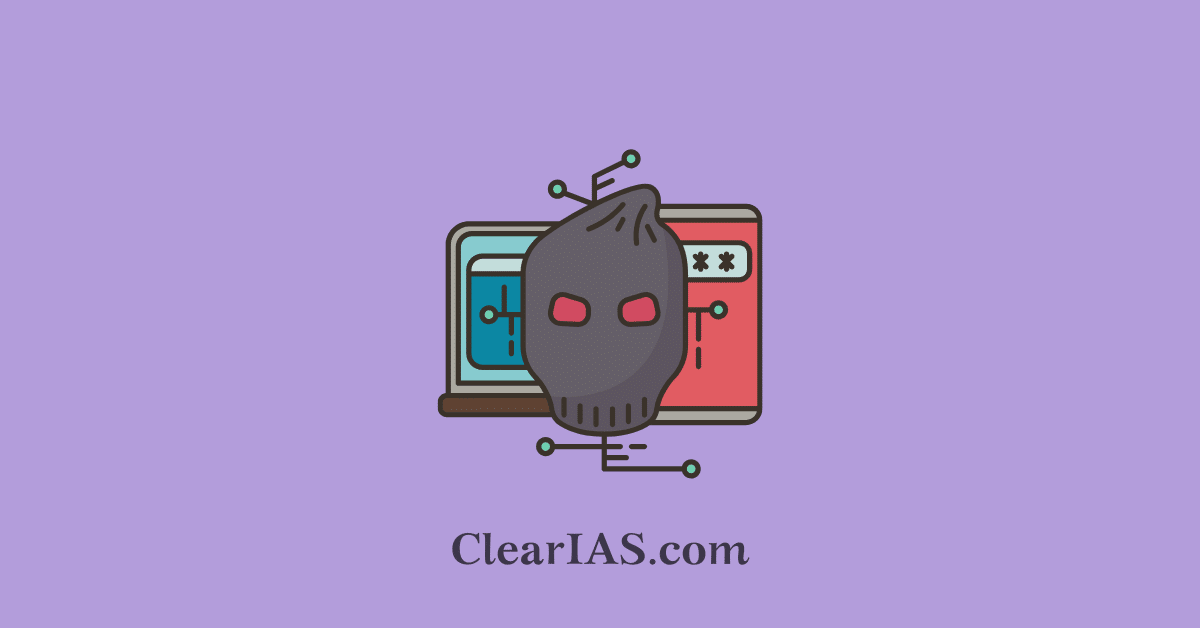
Rising Digital Tradecraft in Terrorism has become the new challenge for India’s Security Architecture. Read here to learn more.
The recent car explosion near Delhi’s Red Fort has exposed a growing and dangerous shift in terrorism: the use of digital tradecraft, highly encrypted, anonymous, and decentralised digital tools, to plan and execute attacks.
The National Investigation Agency (NIA) found that terror modules used encrypted apps, burner devices, VPNs, and dead-drop communication methods, signalling a major evolution in India’s internal security threat landscape.
This development underscores the urgent need for advanced cyber-forensics and upgraded counter-terror capabilities.
What is Digital Tradecraft in Terrorism?
Digital tradecraft refers to the modern set of covert online techniques used by terrorist organisations to conceal identity, communicate securely, recruit, radicalise, transfer funds, and plan operations.
It mirrors intelligence agency tradecraft but leverages encrypted, decentralised, anonymous digital ecosystems.
Key Elements of Digital Tradecraft
- Encrypted Communication
Use of apps like Threema, Signal, Telegram, and other end-to-end encrypted platforms that bypass conventional surveillance.
Some platforms do not require a phone number or email, making attribution extremely difficult.
- Anonymity Tools
Terror modules extensively use:
- VPNs, Tor browser
- Proxy servers
- Burner phones
- Shared devices
These hide IP addresses and erase digital footprints.
- Decentralised & Dark Web Platforms
Use of:
- Dark web forums
- Anonymous hosting services
- Self-destructing messages
- Temporary email IDs
- Encrypted cloud storage
These prevent metadata capture and cross-platform tracking.
- Digital Surveillance Evasion
Tactics include:
- Using offline networks (Bluetooth mesh, Wi-Fi dead drops)
- Anti-tracking tools
- Avoiding cloud backups
- Switching SIM cards frequently
Terror operatives communicated using unsent draft emails on a shared account, an advanced dead-drop method leaving minimal forensic trails.
- Online Radicalisation & Recruitment
Social media, gaming platforms, encrypted forums, and AI-generated propaganda are used to target vulnerable individuals.
- Financial Concealment
- Cryptocurrency wallets
- Prepaid cards
- Fake charity crowdfunding
- Hawala networks linked with digital payments
- Digital Operational Planning
Terror cells increasingly use:
- OSINT
- High-resolution satellite maps
- AI tools
- Pattern-of-life analysis for surveillance of targets.
Why This Digital Tradecraft is a threat
- Evades Traditional Surveillance: As encrypted apps, VPNs, self-hosted servers, and draft-only email communications become the norm, phone tapping, metadata analysis, bulk SMS or call intercepts become ineffective.
- Weak Digital Footprint & Forensic Traceability: Minimal or no metadata, anonymous IDs, non-traceable servers, and erased digital trails complicate forensic reconstruction. Legal intercept orders and court warrants find limited success.
- Decentralised & Modular Terror Architecture: Digital tradecraft supports cell-based modular structures, where members might not meet physically or may remain disconnected, reducing the risk of infiltration, leaks, or informant penetration.
- International and Transnational Reach: Use of foreign servers, VPNs, and encrypted platforms often hosted abroad complicates jurisdiction, evidence gathering, and cross-border investigation, raising demand for tech-diplomacy and international cooperation.
- Faster Radicalisation & Recruitment: Digital tradecraft allows recruitment, radicalisation, training, and communication remotely, lowering the barrier for recruitment and enabling extremist content to reach younger, unsuspecting populations.
Challenges Posed by Digital Tradecraft to India’s Counter-Terror Operations
- Outdated Legal and Regulatory Framework
Existing laws, including the IT Act and UAPA, do not adequately cover:
- self-hosted encrypted servers
- draft-only email communication
- decentralised platforms and ephemeral messaging-despite bans, apps like Threema are accessed through VPNs, bypassing Indian restrictions.
- Limited Cyber-Forensic Capabilities
Many state and central agencies lack:
- memory forensics tools
- encrypted network analysis capability
- server-side investigative access
- trained cyber-intelligence personnel
Fragmented digital footprints and anonymising tools slow down forensic attribution.
- Radicalisation of High-Skill Individuals
Cases involving doctors, engineers, and students show ideology entering professional and academic spaces that lack monitoring frameworks.
- Weak International Coordination
Much of the evidence lies on foreign servers. India lacks:
- strong MLAT agreements
- real-time data-sharing frameworks
- International access to encrypted platforms. This creates delays in tracking global terror networks.
What Measures Should India Take?
- Strengthening Advanced Cyber-Forensic Capabilities
- Create specialised cyber-forensic units within NIA, NTRO, IB, and State ATS.
- Expand CERT-In’s mandate for counter-terror attribution and rapid response.
- Invest in tools for memory dumps, encrypted server mapping, and Dark Web forensics.
- Modernise Legal & Regulatory Frameworks
- Amend UAPA (1967) to explicitly recognise digital tradecraft tactics.
- Develop compliance norms for private encrypted servers.
- Empower TRAI to supervise VPN gateways and anonymising services used in terror activity.
- Build Institutional Capacity & Talent Pipelines
- Partner with IITs, IIITs, DRDO, and ISRO for courses in:
- cryptography
- digital forensics
- malware analysis
- OSINT
- Expand recruitment for cyber-intelligence personnel across agencies.
- Strengthen Tech Diplomacy
- Sign MLATs and data-sharing agreements with nations hosting encrypted platforms (e.g., Switzerland for Threema).
- Collaborate with INTERPOL, Europol, and UNSC to track cross-border networks.
- Counter Radicalisation in High-Skill Ecosystems
- Enable UGC and AICTE to create early-warning frameworks for extremist behaviour.
- Strengthen community-level monitoring under the National Integration Council.
- Integrate counter-radicalisation measures into campus security protocols.
Conclusion
Digital tradecraft has transformed terrorism into a borderless, encrypted, anonymous threat, far harder to detect than traditional networks.
India must urgently modernise its counter-terror framework through advanced cyber-forensics, updated laws, skilled manpower, and strong global cooperation.
Only a multi-layered, technology-driven security architecture can counter the covert, fast-evolving world of digital terrorism.







Leave a Reply